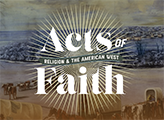




The Sun Dance
Short Bull’s painting
captures the third day of the Sun Dance. Sun Dancers exit a sweat lodge and
march in a line toward the circular dance lodge. A young cottonwood tree has
been placed in the center. In Lakota belief, the tree gathers the sacred powers
of the world into one central point, strengthening each dancer’s relationship
to the community and to all of creation.
By the 1880s, millions of
buffalo had disappeared in the ecological upheaval caused by farmers, cowboys,
and buffalo hunters. Sun Dance rituals required buffalo rawhide and sinew,
among other articles. Obtaining these precious resources became more difficult
than ever. Yet the Lakota persisted. The 1882 Sun Dance brought together 9,000
people, almost one-third of all Lakotas on earth.
The Code of Indian Offenses
Following the massive 1882
Sun Dance, new federal regulations criminalized the Sun Dance. The Office of
Indian Affairs issued the Code of Indian Offenses—a set of rules outlawing the
Sun Dance and other Native practices and customs. “I regard the old heathenish
dances, such as the sun-dance, as a great hindrance to the civilization of the
Indians,” wrote Henry Teller, US Secretary of the Interior. In the
Christian-centric view of the Code's framers, the Sun Dance did not even
qualify as a religious ceremony.
The Code affected all Native
people but was harshly enforced among the Lakota, reflecting US government anxieties
about their large numbers and power. Reservation agents harassed holy men, ordered
raids on Sun Dance gatherings, and refused rations to dance participants.
Repeat offenders were starved or imprisoned.
Despite this repression,
Lakota people continued to practice the Sun Dance covertly, in the badlands or
in other places tucked away from colonial surveillance.

Short Bull
A Prayer of Short Bull and his Adherents before the Ghost Dance, before 1909
Museum am Rothenbaum Kulturen und Künste der Welt, Hamburg, Germany
© Museum am Rothenbaum (MARKK), Hamburg
The Ghost Dance
In 1889, Short Bull and nine
other Lakotas boarded a train to Nevada in search of the new Ghost Dance
religion. There they met its prophet: Wovoka, a Northern Paiute visionary who spoke
of a renewed Earth where Native people would be reunited with dead relations
and the buffalo would return.
Short Bull listened to
Wovoka’s teachings about hastening the coming of this millennium through
dancing and right living. Returning to South Dakota, he preached Wovoka’s
message of hope among his own people. Within a year’s time, nearly one in three
Lakotas were Ghost Dancers. For some, the Ghost Dance filled the spiritual hole
left behind by the Sun Dance ban.
US government misperceptions
of the peaceful Ghost Dance movement triggered new hostilities, culminating in
the 1890 Wounded Knee Massacre. Short Bull witnessed the slaughter of over 270
Lakotas at Wounded Knee, counting many of his own relatives among the dead as
he helped rescue the wounded.

Sioux Warriors
taken prisoner at Pine Ridge and brought to Fort Sheridan, Illinois, in charge
of Captain John B. Kerr, 6th Cavalry, U.S.A., 1890
Bess Bower Dunn Museum of Lake County
After Wounded Knee
After the massacre, the
government authorized William F. “Buffalo Bill” Cody to hire Short Bull and 22
other Lakota prisoners as performers. The men toured Europe in Cody's famous
Wild West show. Government officials may have hoped the tour would separate
Ghost Dance leaders from their reservation communities, but Short Bull and
others used the opportunity to sing and dance in plain sight without fear of
retaliation.
Despite continued
suppression, Ghost Dancers across the American West continued the practice,
often in secret. Wovoka’s teachings spread among Native nations in Oklahoma,
California, Oregon, Canada, and elsewhere into the 20th century. The Ghost
Dance movement inspired Pawnees, Arapahos, and others to revitalize traditional
ceremonies and create new dances.

Short Bull
The Great Circle of the Participants in the Sun Dance, before 1909
GRASSI Museum für Völkerkunde zu Leipzig, Staatliche Kunstsammlungen Dresden, Foto
After the Code of Indian Offenses
The US government did not
rescind the Code of Indian Offenses until 1934. The Lakota resumed public Sun
Dances in 1951, nearly 70 years after the initial ban. The Sun Dance survives
to this day, and it is widely known and practiced among the Lakota and other
Native peoples.